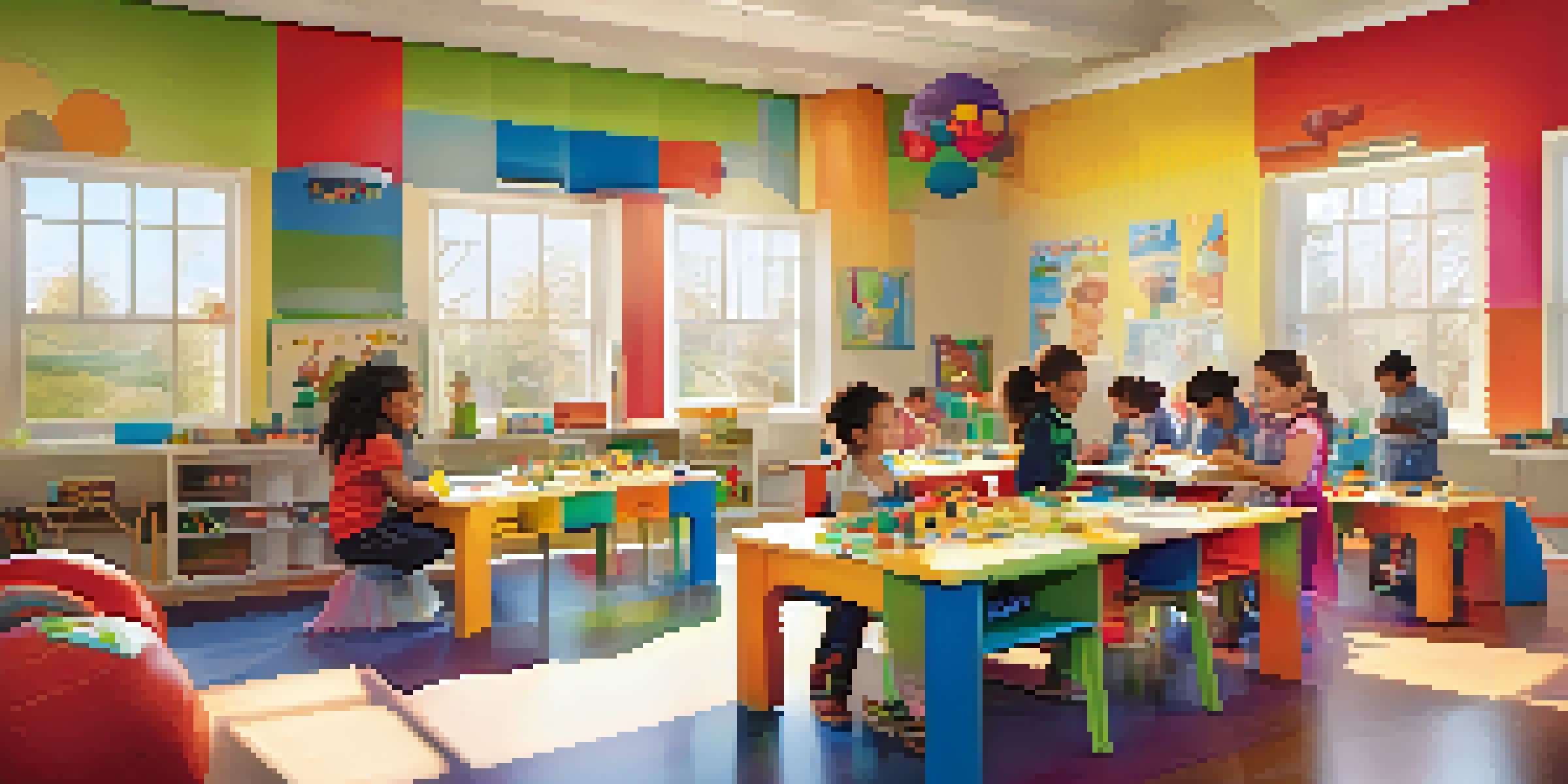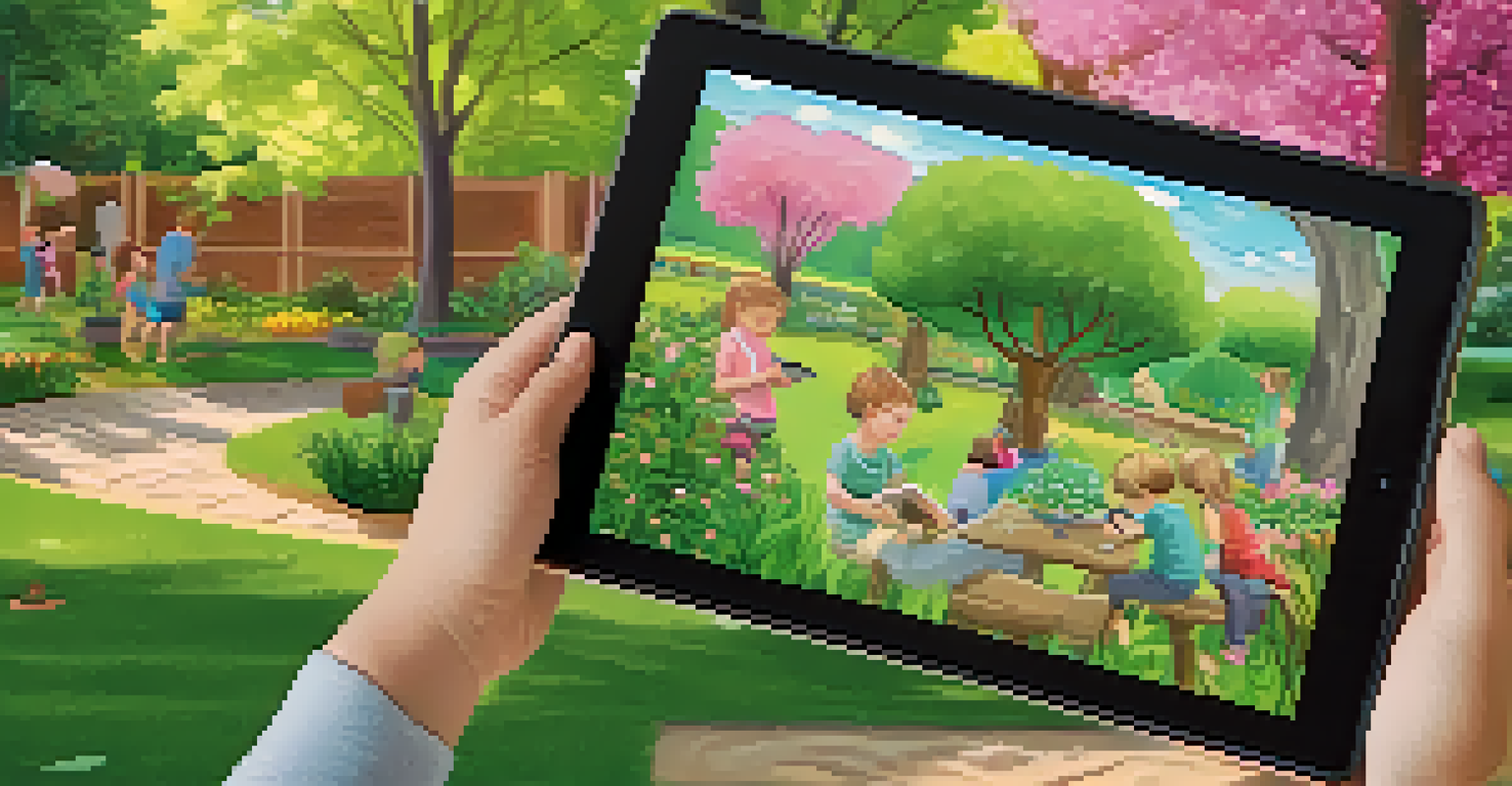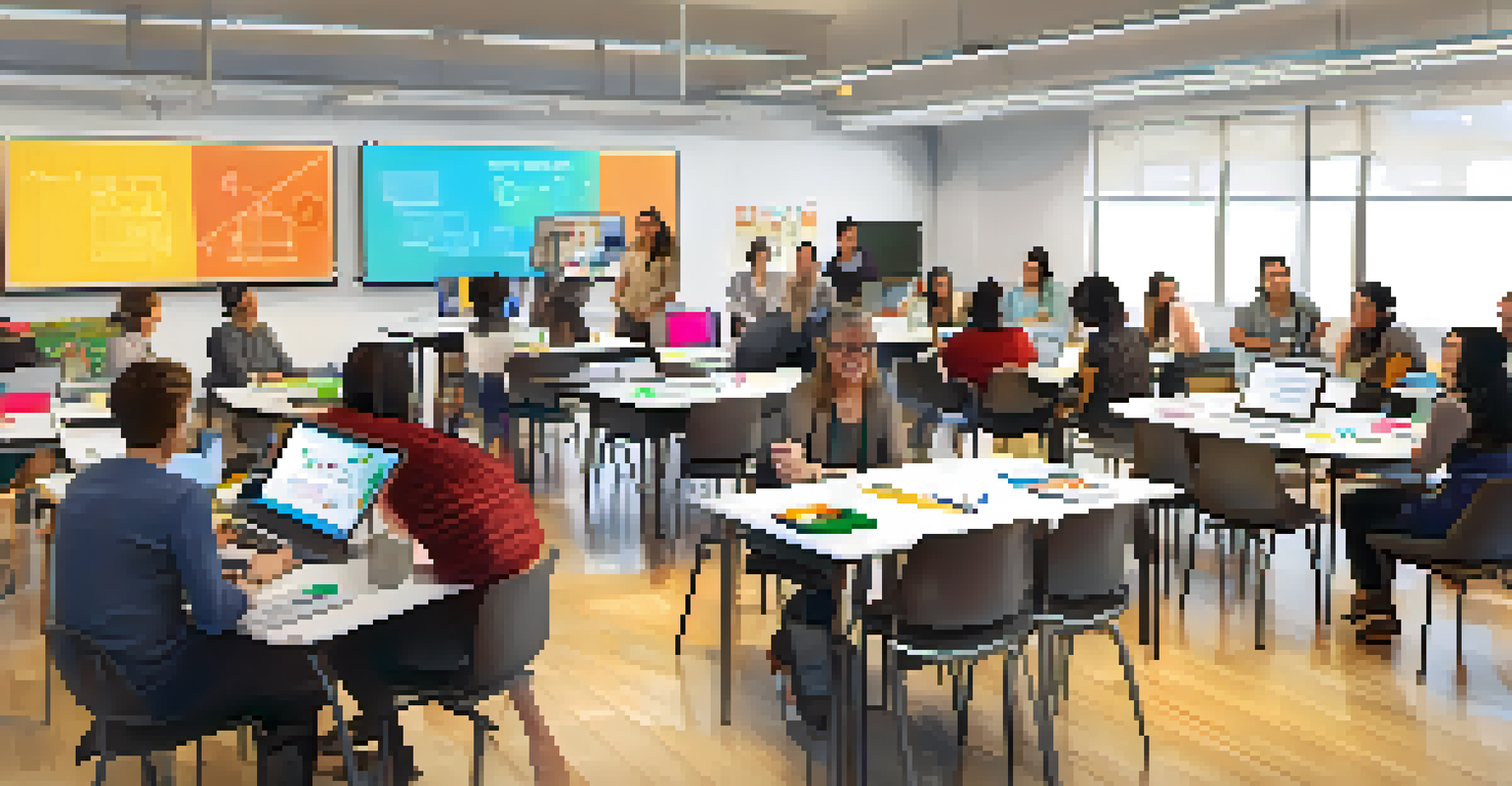Incorporating Technology in Play-Based Learning Environments

Understanding Play-Based Learning and Its Benefits
Play-based learning is an educational approach that uses play as a primary method for children to explore and learn. This method fosters creativity, social skills, and critical thinking, promoting a more engaging learning experience. By allowing children to take the lead in their learning through play, they develop a sense of autonomy and confidence.
Play is the highest form of research.
The benefits of play-based learning extend beyond academic skills; they also enhance emotional intelligence and problem-solving abilities. Children learn to navigate social interactions, express emotions, and manage conflicts, all through the lens of play. This holistic development is crucial in preparing them for real-world challenges.
Incorporating technology into this framework can amplify these benefits, providing new avenues for exploration and creativity. By merging traditional play with digital tools, educators can create dynamic environments that stimulate children's interests and foster deeper learning.
The Role of Technology in Modern Education
Technology has become an integral part of our daily lives, and its role in education is no exception. It offers innovative ways to engage students, making learning more interactive and personalized. From tablets to educational apps, technology provides diverse resources that cater to various learning styles and preferences.

Moreover, technology can enhance collaboration among children, allowing them to work together on projects or games that require teamwork. This collaborative aspect is vital in a play-based learning environment, as it mirrors real-life interactions and prepares children for future social settings.
Play-Based Learning Enhances Growth
This approach fosters creativity, social skills, and emotional intelligence through exploration and play.
The use of technology in education can also bridge gaps in access to resources. For example, virtual field trips or online classes can provide experiences that might be unavailable locally, ensuring a more inclusive learning environment for all children.
Choosing the Right Technology for Play-Based Learning
Selecting the appropriate technology for a play-based environment requires careful consideration. It's essential to choose tools that enhance play rather than detract from it. For instance, interactive tablets with educational apps can make learning fun without overshadowing the play aspect.
Technology is best when it brings people together.
Consider the age and developmental stage of the children when choosing technology. Younger children may benefit from tactile, hands-on tools, while older children might engage more with digital storytelling or coding games. This tailored approach will ensure that technology complements their learning experience.
It's also crucial to prioritize user-friendly technology that children can navigate independently. The easier a tool is to use, the more likely children will engage with it, thus enriching their play-based learning experience.
Integrating Technology into Play Activities
Integrating technology into play-based activities can be as simple as adding digital storytelling to a puppet show. Children can create their own stories using apps, allowing them to express their creativity and understand narrative structure. This blend of technology and play not only makes learning enjoyable but also fosters literacy skills.
Another example is using augmented reality (AR) to enhance outdoor play. Imagine children exploring a park and using an AR app to discover information about plants and animals they encounter. This interactive experience can deepen their understanding of nature while keeping the play spirit alive.
Technology Boosts Learning Engagement
Integrating technology can create dynamic learning environments that enhance collaboration and adaptability.
Additionally, technology can facilitate imaginative play, such as using coding toys that encourage children to solve problems and think critically. By incorporating technology in this way, educators can create rich learning experiences that stimulate curiosity and engagement.
Monitoring Screen Time in Play-Based Learning
While technology can enhance play-based learning, it's vital to monitor screen time to ensure a balanced approach. Too much screen exposure can detract from physical play and social interactions, which are crucial for children's development. Setting guidelines for technology use helps maintain this balance.
An effective strategy is to designate specific times for technology use during play activities, ensuring that it complements rather than dominates the experience. For example, after a session of outdoor play, children can gather around to use technology in a guided manner, reflecting on their experiences.
Educators and parents should also encourage discussions about screen time with children, helping them understand the importance of balance. By fostering an open dialogue, children can learn to make informed choices about their technology use.
Training Educators for Technology Integration
For successful integration of technology in play-based learning, educators need proper training and support. Professional development opportunities can equip teachers with the skills and confidence to use technology effectively. This training should focus on both the technical aspects and pedagogical strategies to enhance children's learning experiences.
Moreover, collaboration among educators can foster a supportive environment where teachers can share ideas and resources. Creating a community of practice allows for ongoing learning and adaptation, ensuring that technology is used in meaningful ways.
Balanced Screen Time is Essential
Monitoring screen time ensures that technology complements physical play and social interactions for healthy development.
Lastly, educators should be encouraged to continually explore new technologies and assess their impact on children's learning. This proactive approach will help them stay current with trends and tools that can enrich the play-based learning environment.
Future Trends in Technology and Play-Based Learning
As technology evolves, so too will its role in play-based learning environments. Emerging trends like artificial intelligence (AI) and virtual reality (VR) are poised to transform how children engage with learning. These technologies can create immersive experiences that captivate children's imaginations and deepen their learning.
For instance, VR can transport children to different worlds, allowing them to explore historical events or scientific phenomena in a way that feels real. This kind of engagement can ignite curiosity and motivate children to learn more about the subjects they encounter.

Additionally, the rise of adaptive learning technologies will personalize the educational experience further. These tools can assess a child's progress and adjust the learning material accordingly, ensuring that each child receives a tailored experience that meets their unique needs.